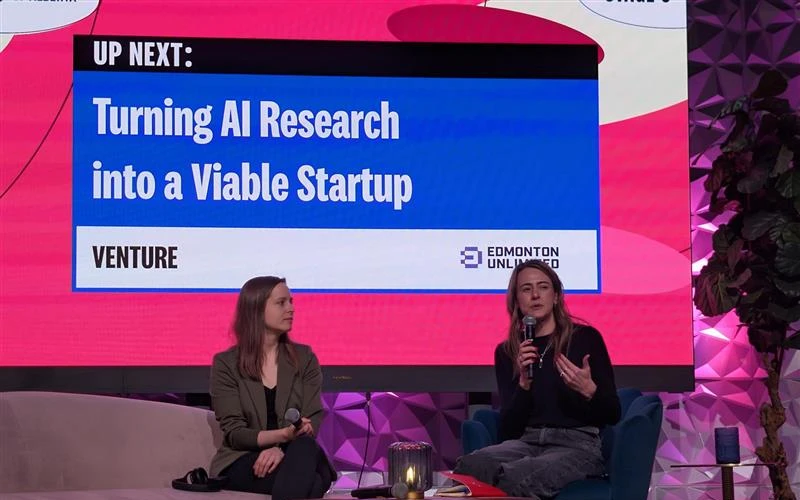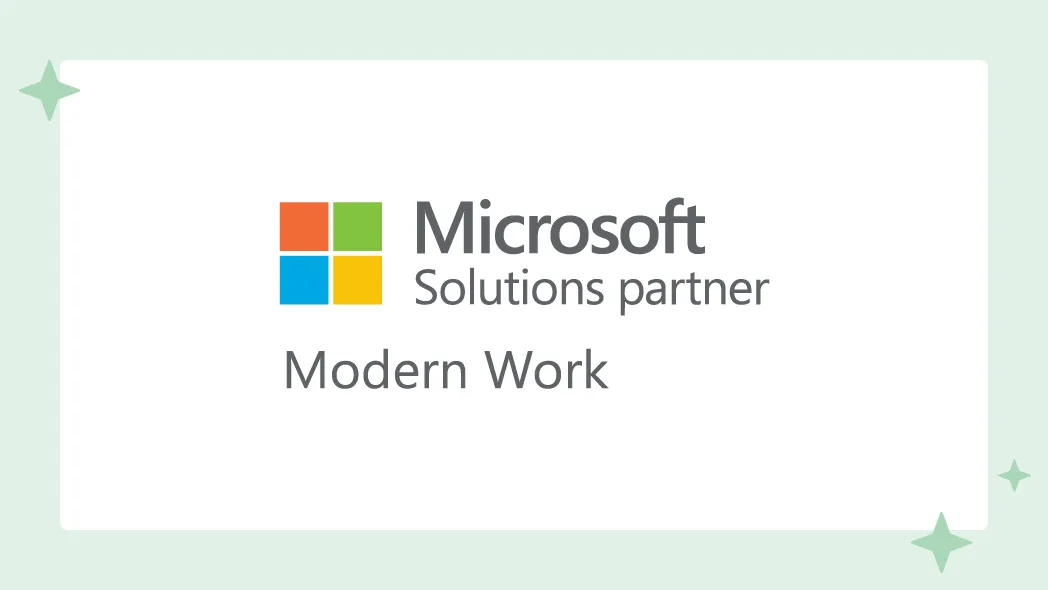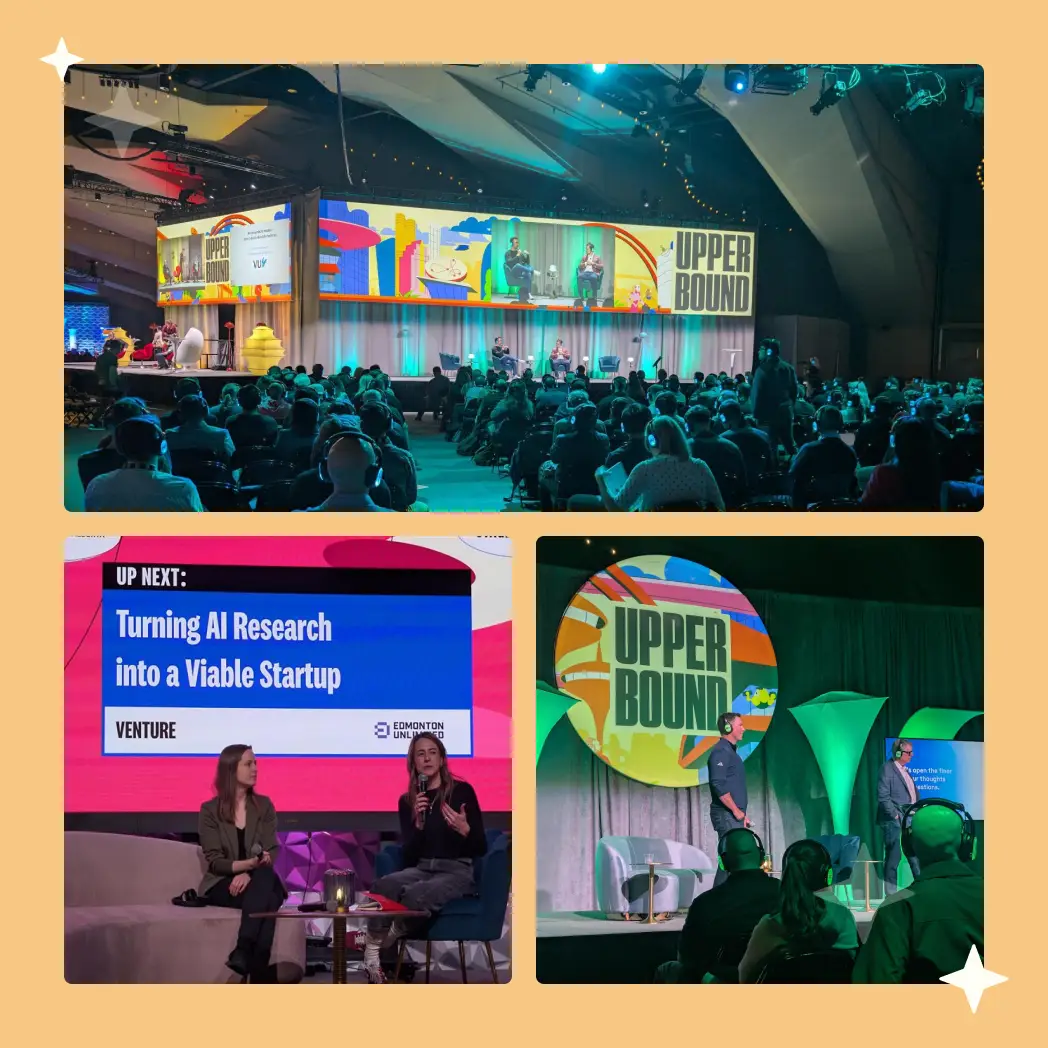Unbound at Upper Bound 2025
QUICK SUMMARY
Product Manager Andre Pardo shares his surprising discoveries made at this year’s Upper Bound conference that may change your views on AI and why your business may not be as far behind as you think.


When I arrived at this year’s Upper Bound, an annual artificial intelligence (AI) conference held by the Alberta Machine Intelligence Institute (Amii), for researchers, business leaders, and entrepreneurs to help shape a positive AI future, I was eager to elevate my AI game.
As a Product Manager, my goal was clear: I wanted technical depth, practical frameworks, and actionable insights that could enhance my work and guide me on the next steps of my AI journey.

Just Another AI Conference
However, after the first day of the conference, I found myself somewhat disappointed.
Many of the presentations showcased companies that were using artificial intelligence to solve problems, build agents, integrate tools, and create internal efficiencies, but few offered substantial details.
- How exactly did they implement these solutions?
- What challenges did they overcome?
- Most importantly, how could I apply their learnings practically in my own projects for Punchcard clients?
These crucial questions often went unanswered, leaving sessions feeling more like corporate show-and-tells rather than actionable deep dives.
Shifting Gears: Discovering Value
Thankfully, by Day 2 and 3, two key themes began to emerge.
Themes that not only reframed the way I viewed the conference but also reinforced my excitement for where we currently are in the artificial intelligence lifecycle and the future opportunities that still lie ahead for both Punchcard and our clients.
We’re Still Early and That’s Great News

One of the most important takeaways was the reminder that we’re still at the very beginning of the AI revolution.
With ongoing messaging around AI’s disruptive and potentially catastrophic risks, it’s natural to feel apprehensive about being left behind. Many worry they’ve missed the boat and fallen too far behind their peers and competitors. The reality is that this is far from true.
Today’s AI moment resembles that of the Internet back in 1996: a period filled with skepticism, confusion, hype, and enormous untapped potential. One speaker offered a compelling historical analogy: twenty years after the introduction of electricity, only 3% of North American factories had used it for anything beyond light bulbs. Real transformation doesn’t happen overnight—it’s gradual, uneven, and often messy.
This point was further reinforced by data showing that over half of Canadians still don’t regularly use artificial intelligence in any form. This served as a powerful reminder that most people and companies are still just tinkering with AI. Far from being behind, we’re actually at the perfect moment to dive in, explore, and innovate.
Focus on Value, Not Hype

The second major insight was a little more practical.
Many of us are stuck on questions like, “should I be using ChatGPT, Anthropic or CoPilot?” But that’s like asking, “should I be driving a Porsche, Ferrari or Lamborghini?” when most people and companies are still riding bicycles.
It’s not about picking the right large language model; it’s about leveraging the technology to make sure you keep getting ahead. It’s about getting off the bicycle. Rather than chasing the newest AI model or trendy tech platform for its own sake, the critical question you should always be asking yourself is, “what’s the value and how do I leverage it?”
Many of us easily grasp the immediate use cases of artificial intelligence, such as drafting emails or generating reports, but often we miss the broader value proposition. Can the AI solution help drive significant business outcomes? Can it support a strong business case? If not, go back to the original question: “what’s the value and how do I leverage it?”
The real value may lie in AI’s capacity to automate and scale processes. AI agents provide promise in their ability to not only iteratively update a report but also integrate and execute multi-step workflows.
But even without fully automated agents, systematic use of AI in standardized processes can drastically enhance productivity and efficiency. AI may not be able to independently run your product discovery process, but imagine leveraging AI throughout your engagements, not replacing human insight but significantly augmenting it, to help save time, improve quality, and increase customer satisfaction.
Transitioning from isolated use cases to fully integrated, scalable processes is where AI becomes transformative rather than merely interesting. Real impact emerges from aligning technology with business goals and operational realities, not from pursuing the latest hype.
Final Thoughts
While Upper Bound didn’t initially meet my expectations in terms of depth, it ultimately delivered something equally valuable: perspective.
I walked away with a reaffirmed understanding of where we stand as an AI community and the practical steps needed to drive meaningful progress, not simply as enthusiasts, but as builders of impactful products.
If you’re feeling overwhelmed by AI or uncertain about where to begin, take heart: it’s still early. Focus on creating and delivering genuine value, this is where the true AI revolution begins.
Whether your company is well into its AI journey, seeking strategic digital guidance, or preparing to launch a new digital product, Punchcard can help you take the next step.



You Might Also Like
Featured Posts

Stop using the wrong AI platforms: LLMs vs. Reasoning Models
Read more: Stop using the wrong AI platforms: LLMs vs. Reasoning Models










